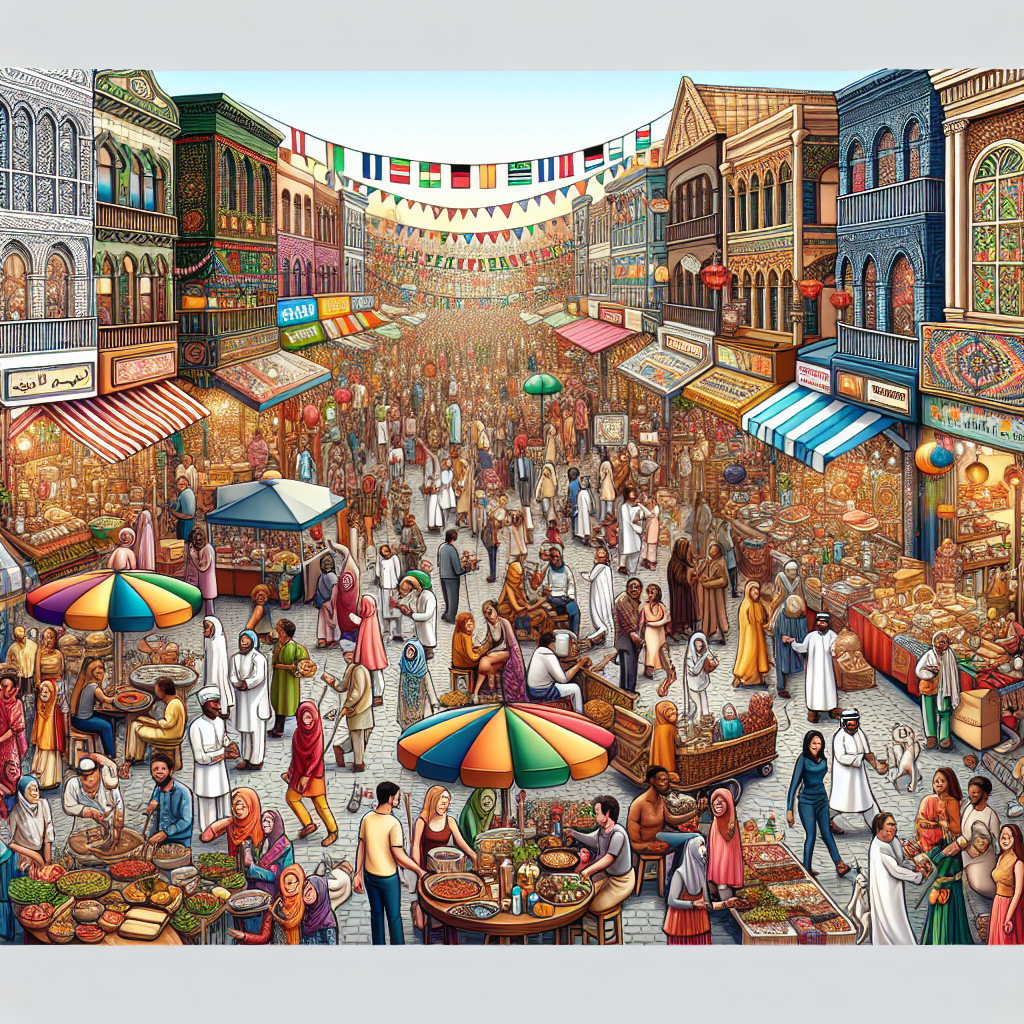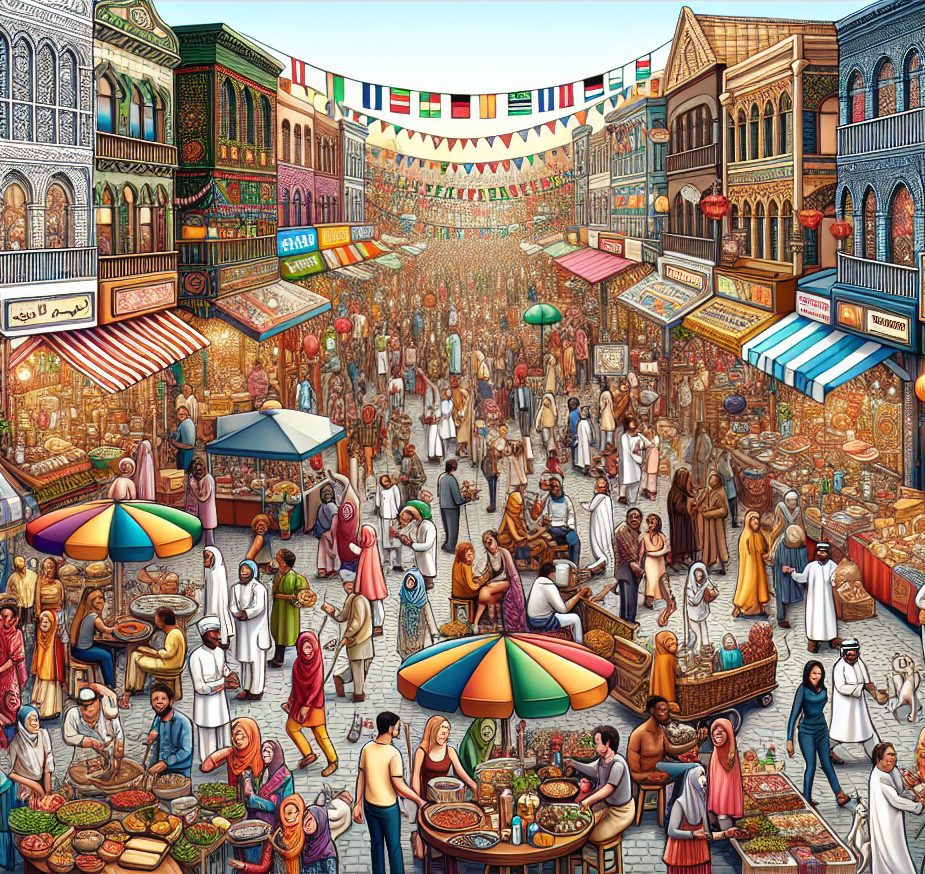Discovering Hidden Enclaves: What They Mean for Culture Today

Imagine walking through a bustling urban landscape, where the vibe suddenly shifts as you enter a small neighborhood. The atmosphere feels unique, as if you’ve crossed an invisible line into a different world—this is the essence of an “enclave.” But what does this term truly mean? The exploration of “enclave” begins with its fascinating etymology, history, evolution, and modern relevance. Buckle up as we unravel the concept of enclaves and uncover fun facts that make them even more interesting!
The term “enclave” has its roots in the Latin word “claviculus,” meaning “small key.” It’s interesting to consider how enclaves act like keys that unlock intricate histories and geographies. The word began its journey into English in the 14th century through French, from “enclaver,” which translates to “to enclose.” In feudal times, lords often governed areas surrounded by rival lands, establishing the foundational meaning of the term. Imagine a hidden treasure trove, nestled within the drama of political rivalries—enclaves, in essence, represent these unique and defined regions.
As time passed, the term “enclave” evolved to include not just geographic territories, but also areas defined by cultural or ethnic homogeneity. Take the Republic of Artsakh, for example. Aspiring for independence, this South Caucasian enclave showcases how ethnic identities contribute to territorial existence. The identities formed in enclaves challenge our understanding of belonging in a diverse world. How do these areas shape our collective sense of community?
In the modern age, enclaves have become increasingly embedded in our daily language and interactions. You might hear phrases like “ethnic enclave” spoken in discussions of cities rich with multicultural diversity. Picture vibrant neighborhoods filled with unique cuisines, festivals, and traditions—like Little Italy or Chinatown—where residents can celebrate their cultures while forming a community. These enclaves serve not just as cultural sanctuaries but also as social hubs, nurturing identities that thrive amidst the bustling city life. Isn’t it intriguing how such neighborhoods influence our perceptions and connections?
However, enclaves aren’t strictly confined to cultural discussion. They also extend into economics and ecology. An “economic enclave,” for instance, describes a wealthy area isolated from surrounding poverty—like an island of affluence in a sea of struggle. Likewise, certain wildlife can form species enclaves, where unique flora and fauna develop in isolation. This versatility of the term across various fields illustrates just how multifaceted enclaves can be.
Now, let’s break up the information with a sprinkle of fun facts about enclaves! Did you know that Lesotho is entirely landlocked by South Africa? This curious situation leads to fascinating cultural exchanges and economic impacts, as decisions in one nation directly affect the other. Another compelling example is Kaliningrad Oblast, a Russian exclave snuggled between Poland and Lithuania, making geopolitics an intriguing puzzle. What other unique relationships lie within the world of enclaves that our imaginations can explore?
Yet, enclaves often harbor tensions, acting as flashpoints for conflict. Take Kashmir, for instance—a region mired in territorial disputes between India and Pakistan, illustrating how enclaves can evoke deep-rooted historical grievances. Reflecting on these struggles can lead us to understand the profound significance of enclaves in today’s complex geopolitical landscape. How do these territories shape the narratives of nations and their people?
The abstract application of “enclave” also features prominently in literature and art. Writers utilize the concept to symbolize themes of isolation, identity, and cultural divide. Imagine characters navigating enclaves; their journeys reflect human experiences of belonging and above all—recognizing the multifaceted nature of identity within constrained space. The intrigue of “enclave” extends beyond geography, weaving itself into stories that touch the depths of human experience.
As we look at today’s world, enclaves have morphed into the cultural heart of migration discussions. With immigrant communities forming their own enclaves in urban centers, the balance between cultural preservation and assimilation becomes increasingly pressing. Share your thoughts: How do these social constructs interact with our collective identity in an increasingly globalized world?
In conclusion, the concept of an enclave offers a rich juxtaposition of history, politics, sociology, and geography. These intriguing territories invite us to delve deeper into themes of cultural identity, isolation, and connection. Whether you’re strolling through a city or exploring literature, enclaves open doors to understanding our shared human experience while challenging our perceptions of boundaries. As we navigate through life, how can we redefine these connections and foster a more inclusive future in the beautifully diverse world around us?
Take a moment, ponder on this, and consider visiting a local enclave or sharing your own experiences online. After all, delving into the vibrant world of enclaves can lead to greater understanding and appreciation of the complex tapestry of human culture!
Victor Penn

